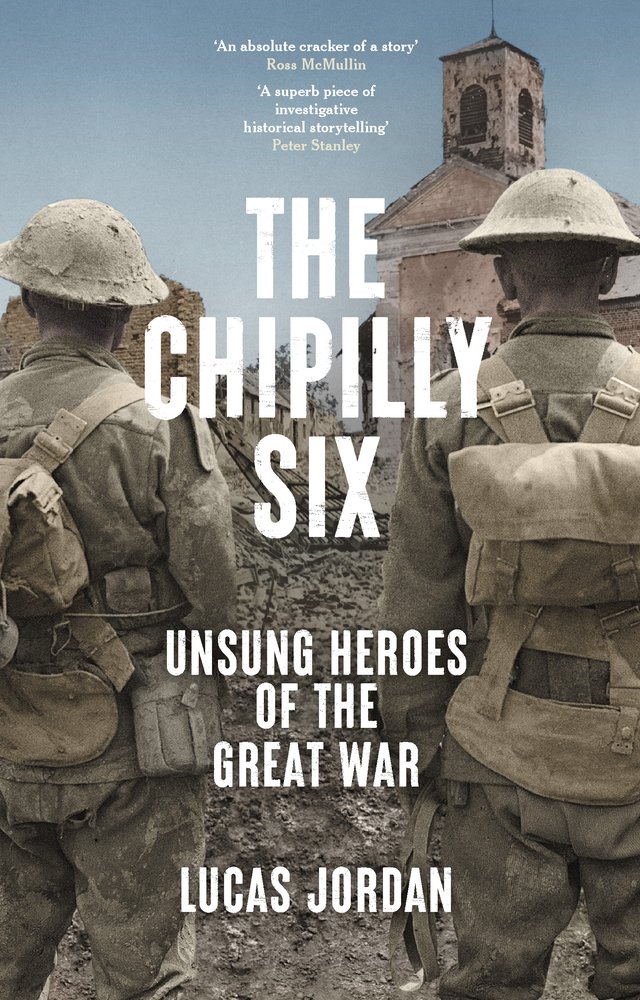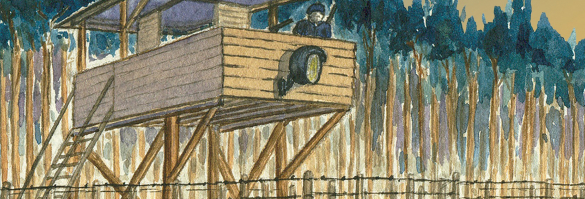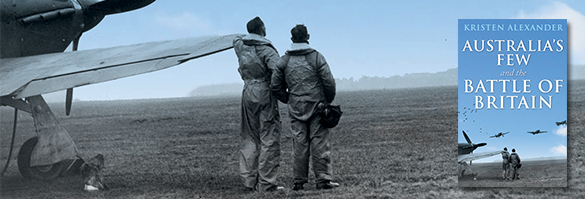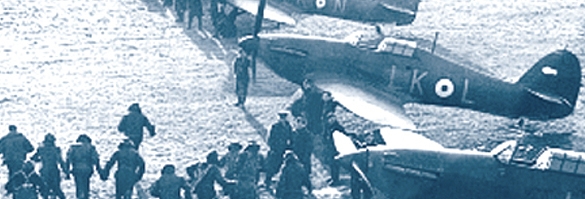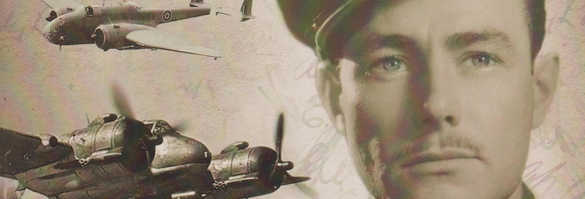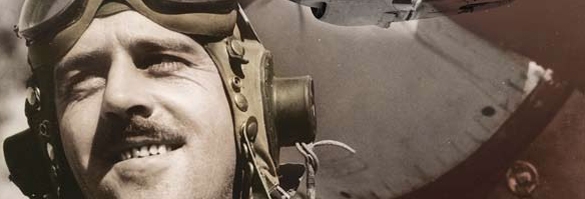The Chipilly Six: unsung heroes of the Great War
Lucas Jordan, The Chipilly Six: unsung heroes of the Great War, NewSouth Publishing, Sydney, NSW, 2023, xi + 307; 9781742238098.
Lucas Jordan’s The Chipilly Six: unsung heroes of the Great War is a beautifully written, sensitive yet utterly compelling account of a little-known action during the battle of Amiens, where sergeants Jack Hayes and Harold Andrews and four friends crossed the Somme River to drive the enemy off Chipilly Spur. Despite their major contribution to the series of Allied victories that ultimately led to the German Army’s collapse, the ‘Chipilly Six’ received no official recognition for their achievement on 9 August 1918.
Hayes and Andrews were absent without leave – on the scrounge for souvenirs during a major battle – when they saw the British advance had been held up by German machine gun fire. The men realised they could do something. They had the skill and weapons. What happens next is extraordinary. What is even more extraordinary is that the Chipilly Six did not receive due recognition for their deed. While friends believed they should have been awarded Victoria Crosses, others claimed credit for their action. Historian Lucas Jordan asks, ‘Now more than one hundred years later, surely it is time to recognise that the Chipilly Six stand high in the pantheon of men who in 1918 won the war by acts of monumental motivation and skill’. It is indeed, and this book is a fitting tribute to Hayes, Andrews, George Stevens, Jerry Fuller, Billy Kane, and Dick Turpin for their brilliant work.
Jordan first began unearthing the Chipilly ‘stunt’ while researching his first book, Stealth Raiders: a few daring men in 1918 (Penguin, 2017). This long genesis enabled a careful unravelling of the incident and the lives of the six men who carried out their audacious act. Jordan’s archival research is deep, well supplemented by newspaper accounts and family memory. While Jordan sketches the military backgrounds of the Six and closely attends to the battle situation before and after the ‘stunt’, I would not call this military history. In following the lives of the Six until death, it is a group biography. Sadly, though, there are gaps in some of the lives, which highlights the limits of personal history (if the subject does not record his or her memories), public record, and family recollection. Jordan, however, deftly weaves his narrative to make best use of the available sources. I welcomed the inclusion of endnotes, bibliography, and index; these sadly, are not always a given. The book includes a generous selection of images as plates, with a number scattered throughout the text, and some useful maps.
The Chipilly Six is more than a satisfying group biography. With detailed contextualisation throughout the decades that also touches on political, medical, and commemorative history, it is the very best sort of social and family history. It is intimate, revealing, and in dealing with the long legacy of war, very relevant.
Bill Gammage, who, along with Ross McMullin encouraged and supported Jordan in correcting the Chipilly record, states that this is ‘A remarkable insight into a vanishing world’. I certainly agree, but, in a sense, we continue to live in a post-war world. Men and women still return from conflict zones, learn to adjust, rely on family, friends, and social networks to cope, get by, and succeed in life. Some live with physical and mental trauma. Many learn to manage it. Some cannot.
The long legacy of war is not necessarily all negative and Jordan well highlights the positives in the Six’s post-war years. Some, like Jack Hayes and Harold Andrews spent a lifetime ‘giving back’, helping comrades and members of their community to enjoy better lives. Service clubs and organisations can be major sources of support for veterans. Family and friends, partners and children can make the challenges of life bearable; I was particularly pleased to see that Jordan carefully considered the important roles of women in these men’s lives and, in the case of May Hayes, her significant contribution (along with Jack) to the Marrickville Anzac Memorial Club. The circumstances of service for those returning from our more recent wars may be different, but in highlighting the traumas and blessings of the long post-war years, this book will remain pertinent.
For me, one of the most captivating (and intriguing) stories is Jack Hayes’ possible link to the first Martin Place dawn service. Jordan leaves it to the reader to determine: ‘If the origin story lies somewhere between truth and myth, surely it is big enough to remember a man like Jack Hayes’.
The Chipilly Six was deservedly shortlisted for the Anzac Memorial Trustees Military History Prize in the 2024 NSW Premier’s History Awards. By recognising both the immediate effects of war and the long legacy of combat on participants, families, and society, The Chipilly Six is a major contribution to Australian military history. Highly recommended.
(This is the original text of the review that was published in JRAHS: Journal of the Royal Australian Historical Society, Vol 111, Part 1, June 2025, 115-117.
